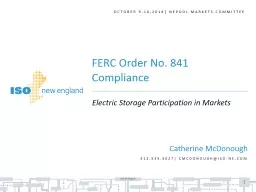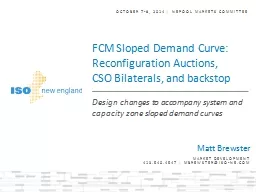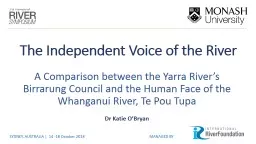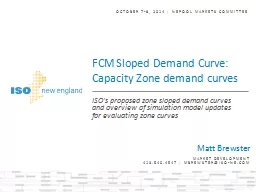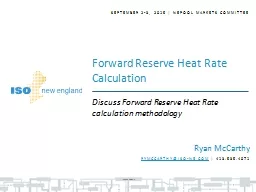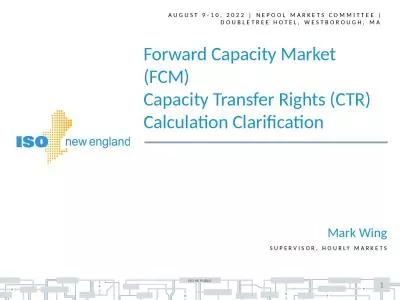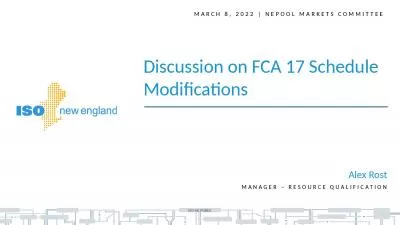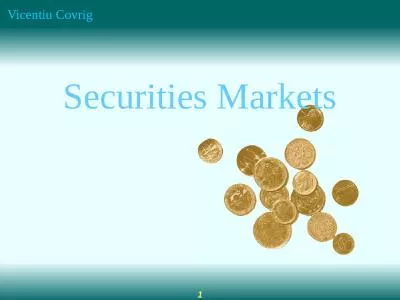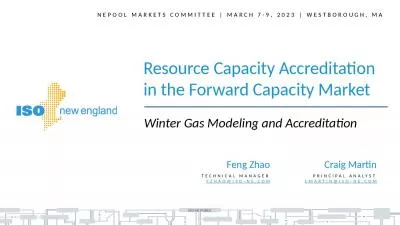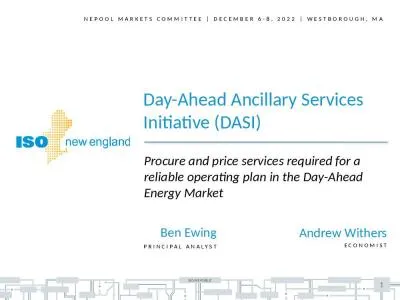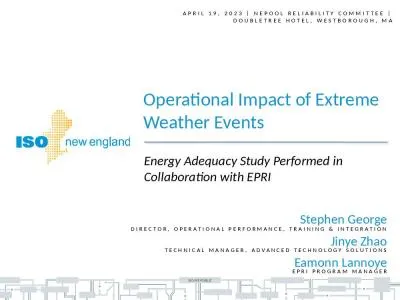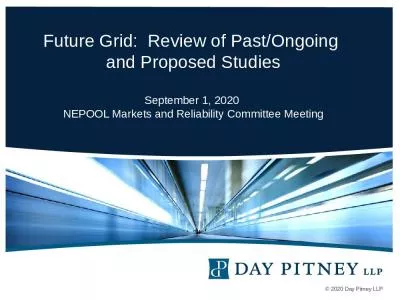PPT-October 9-10,2018| NEPOOL Markets Committee
Author : pasty-toler | Published Date : 2019-11-27
October 9102018 NEPOOL Markets Committee Catherine McDonough 4135354027 cmcdonoughisonecom Electric Storage Participation in Markets FERC Order No 841 Compliance
Presentation Embed Code
Download Presentation
Download Presentation The PPT/PDF document "October 9-10,2018| NEPOOL Markets Commit..." is the property of its rightful owner. Permission is granted to download and print the materials on this website for personal, non-commercial use only, and to display it on your personal computer provided you do not modify the materials and that you retain all copyright notices contained in the materials. By downloading content from our website, you accept the terms of this agreement.
October 9-10,2018| NEPOOL Markets Committee: Transcript
Download Rules Of Document
"October 9-10,2018| NEPOOL Markets Committee"The content belongs to its owner. You may download and print it for personal use, without modification, and keep all copyright notices. By downloading, you agree to these terms.
Related Documents

